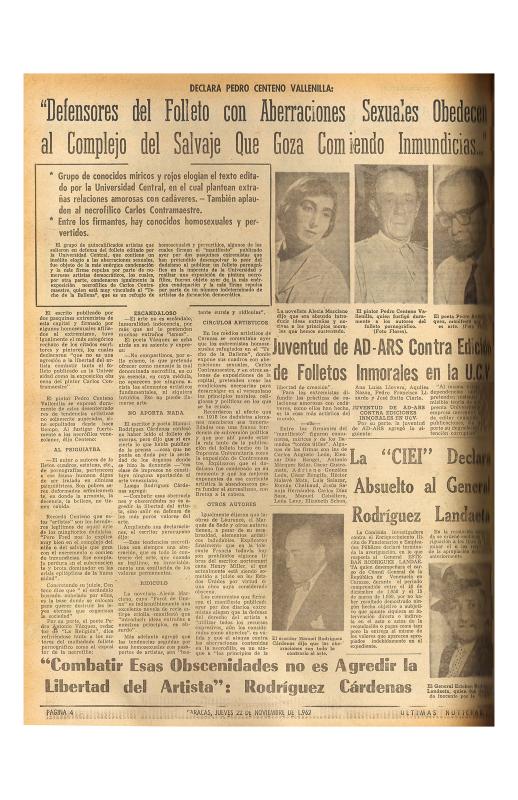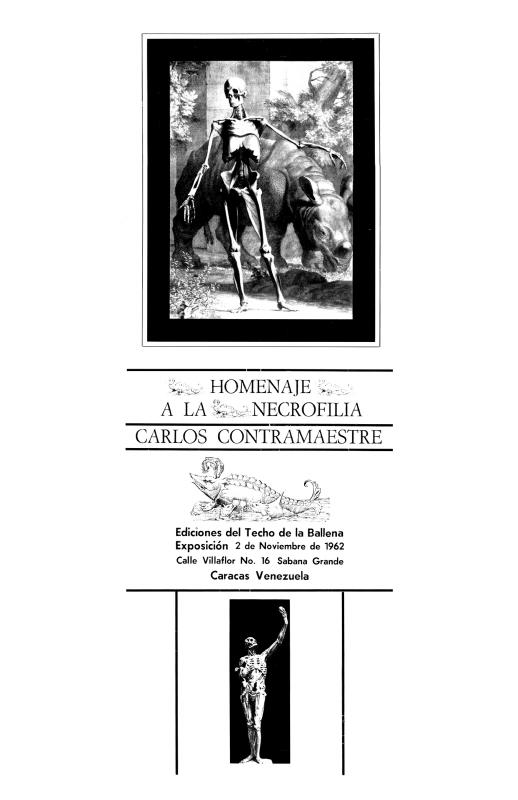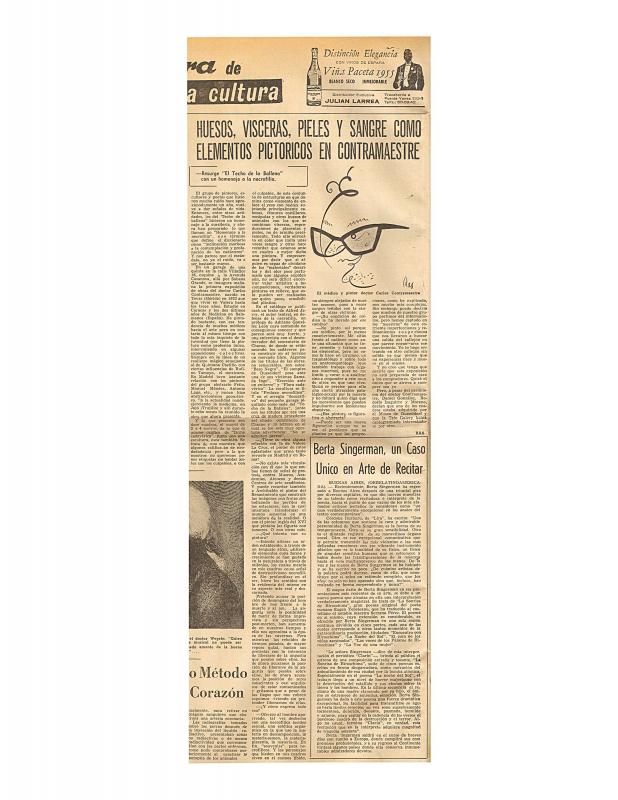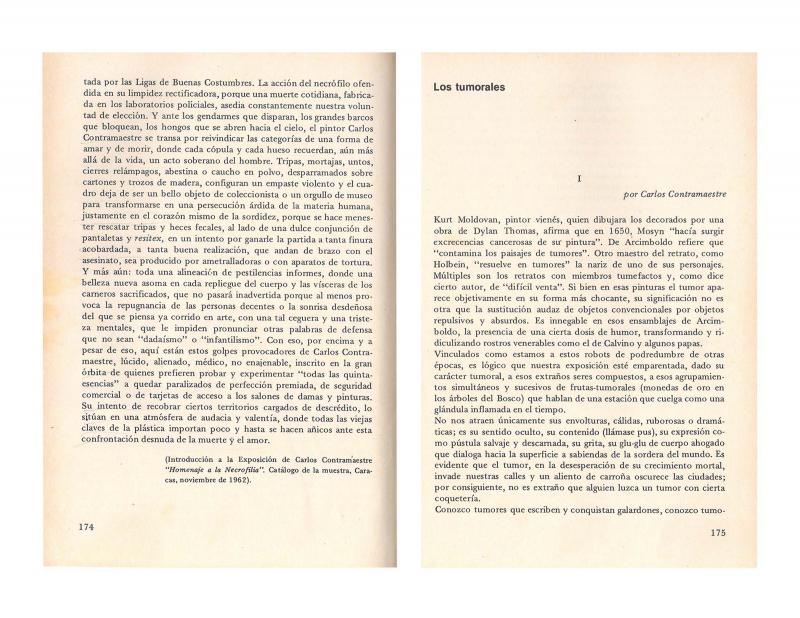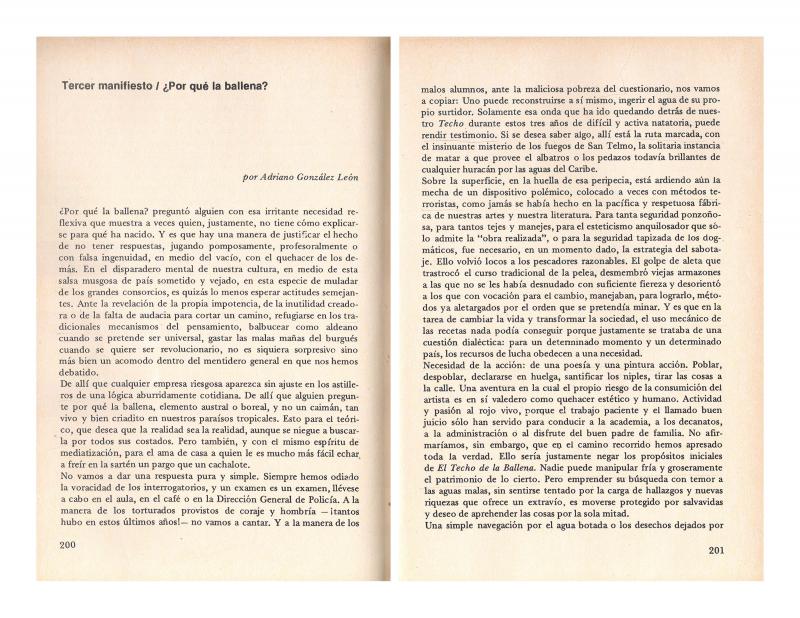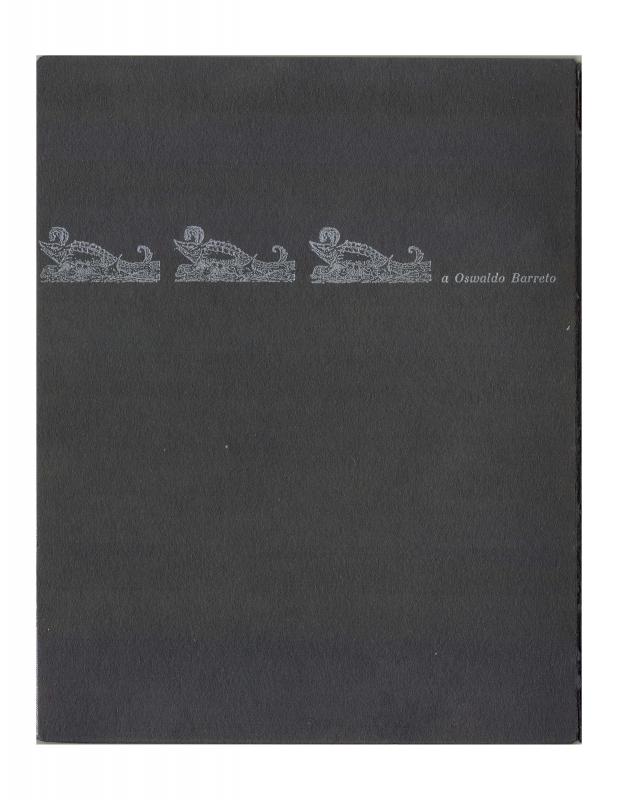This article displays the reactive response to the exhibition and accompanying catalogue, Homenaje a la necrofilia (November 1962), an exhibition organized by the group El Techo de la Ballena, as well as to the works displayed by Carlos Contramaestre, one of its leading members. The print shop of the UCV (Universidad Central de Venezuela), under the auspices of the office of Chancellor Dr. Francisco de Venanzis, published the catalogue, and by his approval of its distribution, was expected to be aware of its contents. The university officials saw the catalogue as a provocation rather than as a show of tolerance and it was possibly printed surreptitiously. The reaction by the critic was contrary to the content of the catalogue. An outraged professor sent the article to the editors of various media requesting its complete publication (as in this case) or citing its primary parts. The position of those offended turned out to be moralistic. The “balleneros” therefore achieved one of its goals: provoking a scandal so large in scale that it rocked the moralism of the cultural bourgeoisie. The groupEl Techo de la Ballena was comprised of Venezuelan avant-garde visual art artists and writers who, between 1961 and 1969, combined their different disciplines—the visual arts, poetry, photography, cinema, and action art, among them—to create a revolutionary art that questioned and fought against the traditional, social, and cultural values during one of the decades in Venezuela known for its increased political violence and equivalent to the existent artistic Informalism at the time. The unconventional warfare, the intellectual leftist postulates, the repression, the deformed city brought about by the accelerated, forced, and rising development of the Venezuelan democracy brought about by Rómulo Betancourt (1959−1964) were the frame of reference in which the group unfolded. In the area of the visual arts, they embraced informal aesthetics with an added strong dose of aggressiveness to counteract the values of geometric abstraction, the traditional landscape, and even social realism, and all together it was a subversive and provocative strategy that was also irrational and surreal. Their editorial publications were numerous—including the three issues of the magazine Rayado sobre el techo—as well as their exhibitions. Its members were among others, the Venezuelans Carlos Contramaestre, Juan Calzadilla, Caupolicán Ovalles, Edmundo Aray, Francisco Pérez Perdomo, Salvador Garmendia, Adriano González León, Fernando Irazábal, Daniel González, Gabriel Morera, Gonzalo Castellanos, Perán Erminy, and the integrated foreigners living in the country: the Chilean Dámaso Ogaz and the Spaniards J. M. Cruxent, Ángel Luque, and Antonio Moya. Homenaje a la Necrofilia was the most controversial exhibition ever offered by the group. It triggered the anger and repudiation of the cultural world, as well as from the public, as noted in an article by Pedro Centeno Vallenilla, which states: “The people who defend this pamphlet with its sexual aberrations are compliant to an intricate savagery that enjoys eating filth...” (doc. no. 865836). With regard to this, refer to the text “Homenaje a la necrofilia,” where Adriano González introduces the work Contramaestre exhibited in the 1962 homonymous exhibition at the Galería El Techo de la Ballena, Caracas (doc. no. 1097543). There is also an interview with Contramaestre by the Journalist RAS (Eduardo Robles Piquer) where he, in a positive sense, places the artist as the culprit of the exhibition: “Huesos, vísceras, pieles y sangre como elementos pictóricos en Contramaestre: Resurge ‘El Techo de la Ballena’ con un homenaje a la necrofilia”(doc. no. 868651). For more texts written by members of El Techo de la Ballena, refer to the following ICAA digital archives: Los tumorales I y II,” in which Juan Calzadilla and Contramaestre present the exhibition Los Tumorales (doc. no. 1097559); “Tercer manifiesto: ¿Por qué la ballena?” by Adriano González León (doc. no. 1097576); and (sin título) [Hay ciertos rostros de la ciudad...] by Francisco Pérez Perdomo] (doc. no. 1060288).

